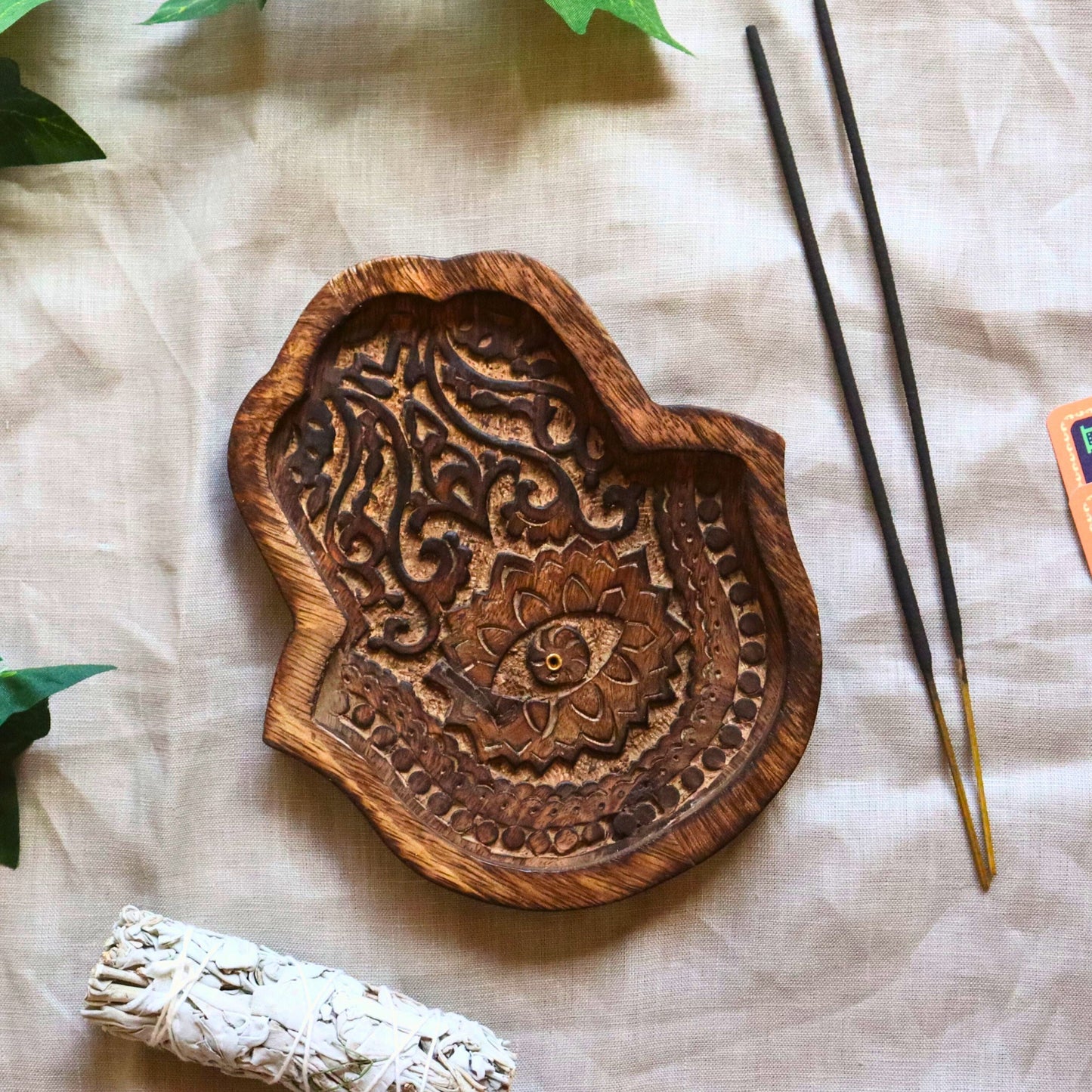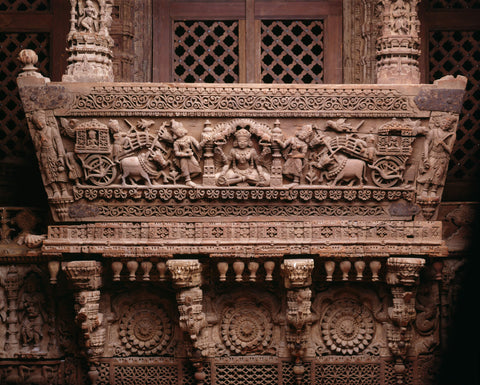Hamsa Incense Holder and 10 Sandalwood Incense: Relaxation Gift Pack
Hamsa Incense Holder and 10 Sandalwood Incense: Relaxation Gift Pack
Couldn't load pickup availability
This set includes a handcrafted holder and 10 sandwood sticks. These sticks will fill your space with the signature sandwood scent. Ideal as a gift for anyone who loves creating a cosy, aromatic ambience, these incense sticks are perfect for unwinding after a long day or setting the mood for relaxation.
Features
Holder is hand-carved with a Burnt finish using ethically sourced Sheesham wood
This Gift pack includes a set of 10 sandalwood incense (made from resins and natural essential oils)
Holder Dimensions
Approx. Length = 175 mm
Approx. Width = 145 mm
Approx. Height = 20 mm
Note
Due to the handmade nature of our products, please expect slight imperfections. This is not a defect, and therefore, this item is non-refundable.
To clean, wipe with a clean, dry, soft cloth
Exercise caution when using this item with burning incense.
This product has been produced ethically by following all the 10 principles of Fair Trade. This includes paying a premium throughout the supply chain for the components and labour, and ensuring eco-friendly materials are used as much as possible.
Share










-
Free Shipping over $75
Shipping Policy$10 Fixed standard shipping fee is waived off when the order value is $75 or above (AU) and $100 or above (NZ).
-
-
Buy Now, Pay Later
Choose your favourite service - AfterPay, Zip, Latitude Pay, Klarna
Collapsible content
About Indian Woodcraft & Artisans
History of Wood
Since centuries, wood has provided fire, shelter, tools, and supported so many inventions e.g. the wheel. Woodcraft in India is dated back to the ancient times of Maharajas. Initially, the art was limited to carving sculptures and windows of temples and palaces. Over many generations and under the influence of its region's culture and locally available wood the art form has evolved and now extends to articles like furniture, decorative pieces, storage boxes, table lamps, toys and puppets.
What is Softwood and Hardwood?
Wood can belong to either of the two categories - softwood or hardwood. Technically, softwood comes from the botanical group Gymnospermae and hardwood comes from the botanical group Angiospermae.
Most softwood are evergreen, have no flowers and develop their seeds in cones (coniferous). They are usually fast growing. This makes them the most widely used woods commercially. Indian Sandalwood is an excellent example of softwood. It has a fragrant resin, thus is highly sought after for making religious images.
Hardwood are usually slower growing than softwoods. They have dense wood lending itself to greater structural integrity than softwood (durability), and is less prone to insect damage. A few examples are walnut, mahogany, balsa, oak, chestnut, elm, teak and sycamore.
About Artisan's Craft
India has an abundance of native wood that lends well to the carving and inlay work. Some examples are Ebony, Rosewood, Sandalwood, Sheesham, and Sal.
The diversity of each region's style and carving technique reflects in the motifs, and patterns on each carved article. The geometrical and floral patterns are the most popular. When an object is carved from a single block, it is believed that the spiritual energy inherent in the tree remains more concentrated.
To produce a beautiful carving from a block of wood requires sharp tools, suitable timber, and planning. Once cut, the wood can not be reattached and thus the artisan has to be careful while shaping his pattern. Finest carding is possible on hardwood due to its ability to split less, and wide range of colours.
What are different wood carving techniques?
There are quite a few carving techniques, some of which are mentioned below.
- Sawn technique - marking of design on a flat piece of wood, and then cutting using a saw.
- Incising and stamping - Scratching wood, making grooves, stamping
- Chip carving - repetitive patterns cut on one chip at a time.
- Flat-pattern carving - think of the carving required to make wooden stamps or printing blocks that are used for dyeing cloths.
- Relief carving - technique to create a three-dimensional effect on a flat surface by cutting back the background and rounding the projecting objects.

Pic: Relief carving used on an Architectural Ensemble from a Jain Meeting Hall
- Intaglio carving - the opposite of relief carving; think of this as moulding.
- Turning - Spinning wood against a tool. This technique has been used to make our nested dolls.

Pic: Nested dolls in a park setting
- Bending technique - for forming curved surfaces
- Joinery - Joints can either fit against each other, across each other or into each other. They can be used to connect lengthwise or at an angle.
What are different wood decoration techniques?
Once our artisan has craved the product, they can employ a range of decorating and finishing techniques to create the final product. Example of such decorations are paintwork, inlay (insetting shapes into cuts made in the wood), banding, and marquetry (pieces are glued to the surface of a piece of wood).

Pic: example of inlay set in Tic Tac Toe Game Set
Conclusion
In many regions, woodcraft production is vital for community livelihoods. By participating with Fair Trade organisations, we contribute to alleviating poverty and promoting sustainability through ethical practices. These organisations aim to educate and empower disadvantaged sections of the Indian community by providing them with job opportunities, gender equality, fair wages, safe and healthy working environment while preserving the local culture & traditional skills.
Book Reference:
Wood - the world of woodwork and carving










